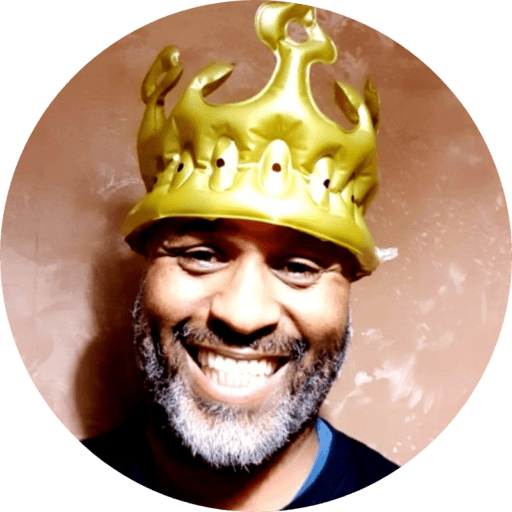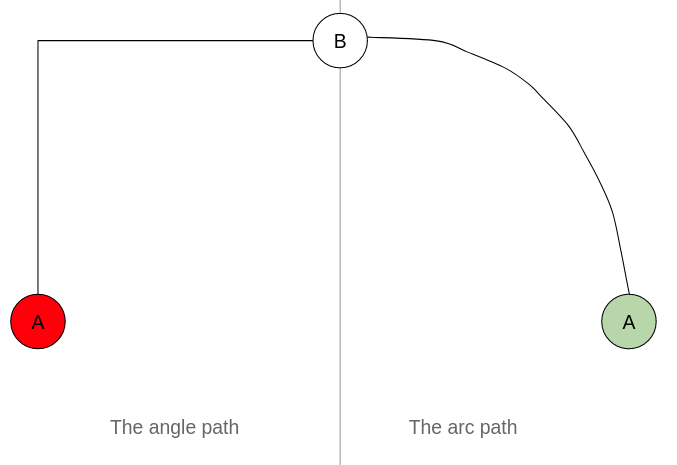One goal, which path would you take?
Imagine you had a goal – perhaps to lose weight or to learn a skill, or even to build some capacity/capability as a person, team, company or country.
Lets call that goal ‘B’ and your starting point – now – is ‘A’.
The sharp angle path

Now imagine you did very little towards getting to ‘B’ until one day when ‘B’ stops being a nice-to-have and , instead, becomes a must-have. I call that day or the event triggering that realisation ‘a sharp turn event’.
So now you’re scrambling, stressing and enduring a massive disruption to everything so you can start heading towards ‘B’ and you needed to be there yesterday.
An example of a sharp turn event is cancer, a heart attack i.e it happens and to reduce the chances of it happening again or as severely – you start to eat better, exercise, cut out smoking and excessive drinking.
Other examples might be being mocked for being overweight or a global pandemic.
The arc path

Now imagine you are in exactly the same starting point and the goal remains unchanged. But instead of doing very little about getting to ‘B’, every day you did something tangible towards the goal and you kept the goal alive by checking if those things you did got you closer and adjusted as you went.
Sharp turn events are not entirely eradicated on this path, but their negative effects can be significantly reduced. You are already some way to the goal, you are on the path.
An example might losing your livelihood whilst pursuing a goal of saving for a home and choosing to live frugally whilst you were saving – being lean. Of course, it seems calamitous that you have lost your job – but given how you are living as you pursued the goal, you are in a better position to weather the disruption vs someone who lived extravagantly (even if they had the same goal as you!).
Arcs are softer but build habit and resilience.
Some thoughts on arcs and sharp angles…
- Arcs require diligence and deliberate action to the goal – not huge steps, but small ones, consistently taken.
- Sharp angle paths are easy – you don’t have to do anything but wish and occasionally lie to yourself and others that you are doing something.
- The longer you leave a goal without working towards it, the sharper and more disruptive the turn. Sometimes, you can leave it too late you pass a point beyond which that exact goal is unattainable and you have to pick another that is within you then-current abilities. E.g. I want to buy a home in 2 years time. I need to save €50,000 for a deposit. The sooner I start the more likely I will be able to do it. If I leave it until, say, a month before I wanted to buy the home – I would have to find €50k in 1 month – an almost impossible task for most people not robbing banks. So maybe you now have to set a goal to buy a house in 5 years vs 2 or not buy at all.
- Arcs require regular reflection and calibration that what you are doing is still valid towards the goal. You might even question if the goal is still valid.
- Critically reviewing your goals can shine a light on what potential sharp turn events might happen. e.g. if my goal was to save €50k in 2 years, an obvious sharp turn event is that I could lose my job. That might lead me down the path of developing side gigs that build resilience to my finances.
In closing, I am no expert in this and I’m not selling any ‘improve your life’ crap. I am simply introspecting into events and paths in my life and things I see around me.
The coronavirus pandemic has shown us that many – if not all – countries have been fixated on either the wrong goals or have not acted in an arc way towards the right goals and we find ourselves in a sharp turn event where the world is mostly unprepared for massive unemployment coupled with a lack of digital tech for everything from government to education.
What are your thoughts on this theory? Please disagree with it and lets explore it further.


Leave a Reply